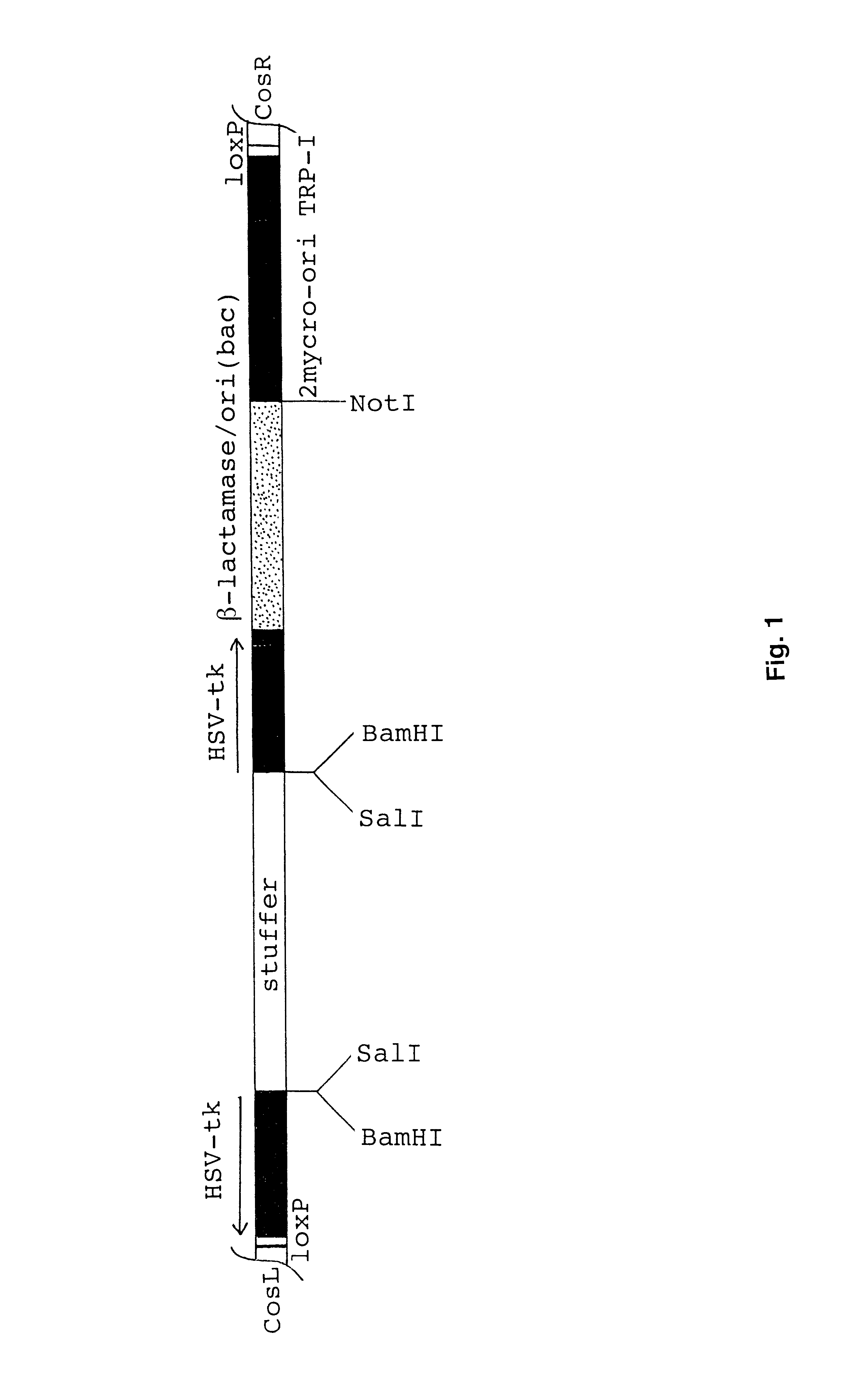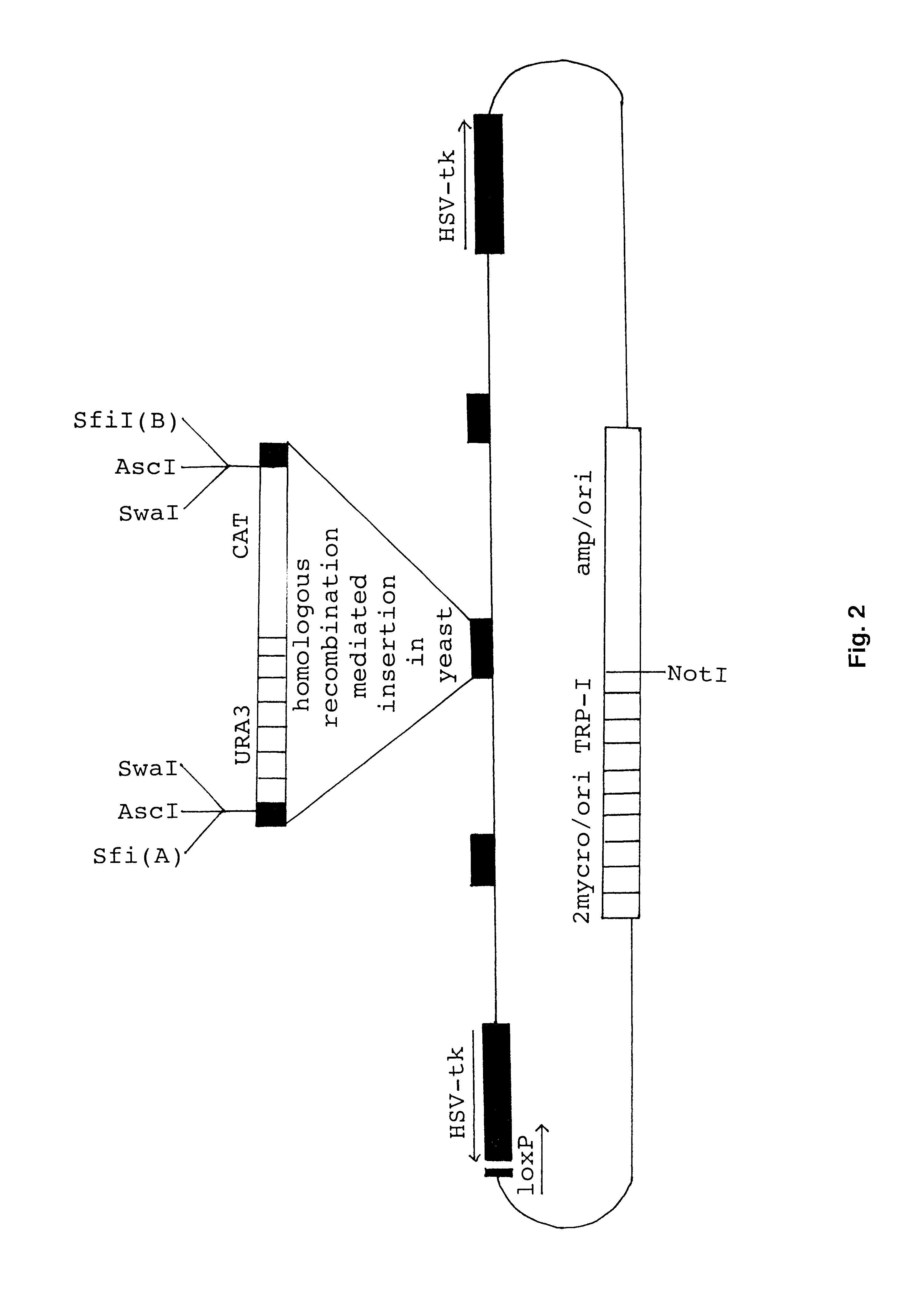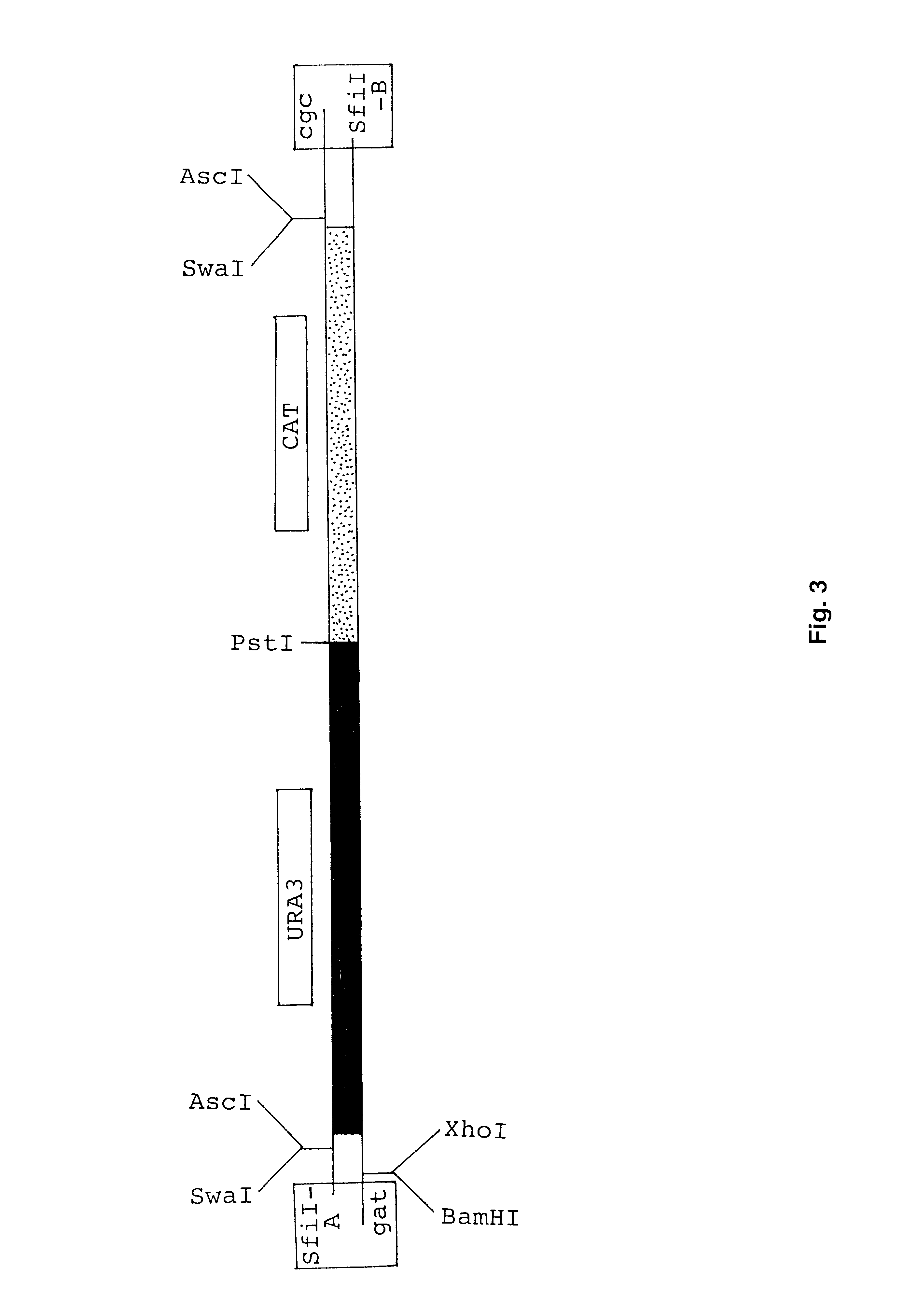Method of constructing vectors for homologous recombination directed mutagenesis
a technology of constructing vectors and mutagenesis, applied in the field of methods and vectors, can solve the problems of time limiting steps and lack of effective construction methods in prior art, and achieve the effect of simplifying the construction of vectors and facilitating construction
- Summary
- Abstract
- Description
- Claims
- Application Information
AI Technical Summary
Benefits of technology
Problems solved by technology
Method used
Image
Examples
example 1
Creation of Linear Lambda Vector (LambdaKOS)
[0049]A vector system was created based on lambda phage cloning which allows the construction of representative genomic libraries of essentially every eukaryotic genome. The linear lambda vector (lambdaKOS) has the following features from left to right (see FIG. 1): cos end and left arm of the phage, synthetic LoxP fragment, HSV-tk gene, endonuclease recognition sites BamHI and SalI, stuffer fragment, endonuclease recognition sites SalI and BamHI, HSV-tk gene, plasmid vector (bacterial origin of replication, β-lactamase gene for ampicillin resistance), endonuclease recognition sites NotI, yeast origin of replication 2micron, yeast auxotrophic TRP1 gene, synthetic LoxP fragment (same relative orientation as the previous one) and the right arm of the phage and cos end. DNA prepared from the lytic growing phage can be digested by the endonucleases SalI and BamHI and the stuffer fragment replaced by genomic DNA partially digested by the endonu...
example 2
Insertion of Positive Selection Cassette (URA3 / CAT-Selection Cassette)
[0050]The insertion of the positive selection cassette (URA3 / CAT-selection cassette) into the genomic DNA of pKOS is carried out by cotransfection of the cassette with the particular pKOS plasmid into yeast and selection for complementation of both auxothrophic requirements of the TRP / URA3-deficient yeast strain. The particular yeast strain used in this system requires the gene products of URA3 and TRP1 to survive and grow on selection plates. The TRP1 gene is delivered by the pKOS plasmid. The complementary URA3 gene is cotransfected as part of the replication deficient positive selection cassette.
[0051]The URA3 / CAT-selection cassette for cloning purposes is part of a high copy bacterial plasmid and has the following features (see FIG. 3): endonuclease recognition sites SfiI, BamHI, XhoI, SwaI and AscI, a yeast active URA3 gene, a bacterial active chloramphenicol acetyltransferase gene (CAT) gene and endonuclease...
example 3
Further Selection for Homologous Recombinant Vectors
[0054]After successful cotransfection of the yeast replication incompetent positive selection cassette with the replication competent E.coli / yeast shuttle plasmid (pKOS), only the yeast cells survive on -URA / -TRP selection plates where the positive selection cassette recombines with the shuttle plasmid. The plasmids are recovered from the yeast cells and transferred into E.coli which allows a further selection by plating on chloramphenicol and ampicillin containing plates using standard procedures. Digestion of the plasmids with the endonuclease AscI or Swal and re-ligation eliminates the URA3 / CAT part of the completed pKOS recombination vector which can be selectively grown in bacteria in ampicillin containing media. Alternatively, the complete URA / CAT-selection cassette can be removed by a digest with the endonuclease SfiI and replaced by any other desired positive selection cassette.
[0055]In order to improve this replacement pro...
PUM
| Property | Measurement | Unit |
|---|---|---|
| time | aaaaa | aaaaa |
| resistance | aaaaa | aaaaa |
| antibiotic resistance | aaaaa | aaaaa |
Abstract
Description
Claims
Application Information
 Login to View More
Login to View More - R&D
- Intellectual Property
- Life Sciences
- Materials
- Tech Scout
- Unparalleled Data Quality
- Higher Quality Content
- 60% Fewer Hallucinations
Browse by: Latest US Patents, China's latest patents, Technical Efficacy Thesaurus, Application Domain, Technology Topic, Popular Technical Reports.
© 2025 PatSnap. All rights reserved.Legal|Privacy policy|Modern Slavery Act Transparency Statement|Sitemap|About US| Contact US: help@patsnap.com



